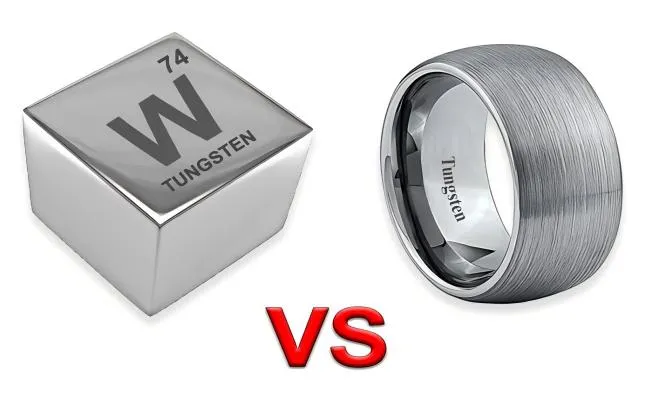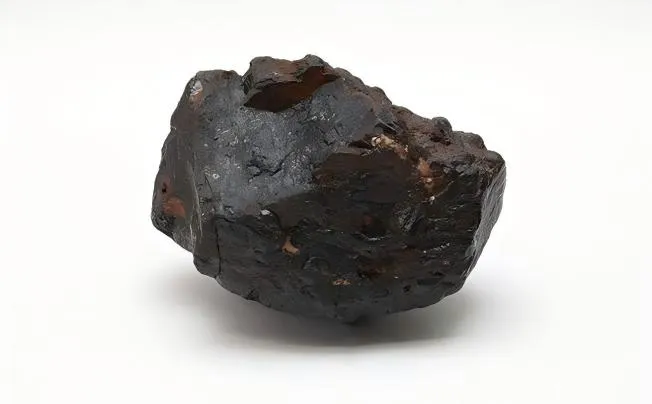Metals and nonmetals are two distinct categories of elements on the periodic table, each characterized by unique properties and behaviors. Metals, which constitute the majority of elements on the periodic table, are known for their luster, malleability, ductility, and high thermal and electrical conductivity.
The Physical Properties of Metals and Nonmetals
- Luster
Metals exhibit a unique physical property known as luster, which is the ability to reflect light and shine brilliantly. This characteristic gives metals a distinctive appearance that is often described as metallic or shiny. When light strikes the surface of a metal, it is reflected uniformly, creating a dazzling effect that sets it apart from nonmetals. This lustrous quality not only enhances the visual appeal of metals but also plays a significant role in identifying them in various applications, such as jewelry making, industrial processes, and construction materials.
- Malleability
One of the remarkable physical properties of metals is their exceptional malleability, allowing them to be hammered or rolled into thin sheets without breaking or cracking. This inherent property stems from the metallic bonding present in metals, which enables their atoms to slide past each other when subjected to external force.
This remarkable malleability makes metals highly versatile materials for shaping and forming into desired shapes and structures. From coins to aluminum foil, the ability of metals to undergo extensive deformation without losing their structural integrity makes them indispensable in various industries.
- Ductility
In addition to being malleable, metals also possess another key physical property called ductility – the ability to be drawn into wires without breaking. This unique characteristic allows metals to be stretched into thin strands or wires that retain their strength and conductivity.
Metals like copper and gold are renowned for their exceptional ductility, making them invaluable in electrical wiring and jewelry-making industries. The process of drawing metal wires involves carefully pulling the metal through dies to reduce its cross-sectional area while maintaining its integrity—a testament to the remarkable ductility exhibited by metallic elements.
Chemical Properties
Metallic Marvels
In the realm of chemical properties, metals stand out for their unique tendency to lose electrons. This characteristic stems from the fact that metals have relatively low ionization energies, making it easier for them to shed outer electrons and form positively charged cations.
This process is crucial in various chemical reactions where metals play a pivotal role. For example, when a metal reacts with an acid, such as hydrochloric acid, a fascinating transformation occurs.
The metal donates electrons to the hydrogen ions in the acid, leading to the formation of hydrogen gas as a byproduct. This effervescent reaction showcases the reactive nature of metals and their ability to liberate hydrogen from acids.
Nonmetallic Wonders
On the flip side of the chemical spectrum lie nonmetals, demonstrating a contrasting behavior when it comes to electron dynamics. Nonmetals exhibit a penchant for gaining electrons rather than losing them, resulting in the formation of negatively charged anions. This propensity for electron acquisition enables nonmetals to achieve greater stability by filling their outer electron shells through electron uptake. When nonmetals encounter metals in chemical reactions, an intriguing interplay unfolds.
The nonmetal's affinity for electrons leads to reactions where they snatch away electrons from metals, forming ionic compounds known as salts.
Bonding Properties
Metallic Bonding
In the realm of metals, the bonds that hold atoms together are called metallic bonding. This unique type of bonding involves the sharing of electrons between the large number of delocalized electrons that are free to move within the lattice structure created by the metal atoms. These shared electrons act as glue, holding the positively charged metal ions together tightly and firmly. The result is a strong bond that gives metals properties such as ductility, malleability, and electrical conductivity. This electron-sharing phenomenon allows metals to conduct electricity and heat efficiently by facilitating the flow of charge carriers through the metal lattice.
The essence of metallic bonding lies in its ability to form a cloud of mobile electrons within the lattice of metal atoms. Since the electrons are free to move throughout the structure, this arrangement allows metals to exhibit properties such as luster, thermal conductivity, and electrical conductivity. The shared electrons move between the positively charged metal ions, unrestricted by specific bonds, giving the material flexibility and strength. This cohesion allows metals to be molded into a variety of shapes without breaking, making them an essential material in construction, manufacturing, and many other industries.
One fascinating aspect of metallic bonding is its effect on the physical properties exhibited by metals. The strength and durability associated with metallic substances stem from this unique bonding mechanism, where positive metal ions are surrounded by a “sea” of negatively charged delocalized electrons.
By allowing these free-flowing electrons to move easily throughout the structure under applied forces or electric fields, metallic bonds provide metals with extraordinary elasticity and the ability to deform without losing their overall integrity.
Covalent Bonding
At the other end of the chemical spectrum are nonmetals that participate in covalent bonding. Unlike metallic bonds, which are characterized by electron mobility throughout the structure, covalent bonds are formed when two nonmetal atoms come into proximity to share electron pairs between their nuclei. It is a fundamental force that drives molecular interactions and shapes countless compounds found in nature or artificially synthesized for a variety of applications.
By sharing electrons between neighboring atomic partners within a molecule or solid structure, nonmetals can create stable configurations that meet their valence electron requirements while promoting chemical stability within each bonded entity. This close sharing promotes strong connections between atoms through shared electron density distribution while allowing for different structural arrangements based on the different combinations and orientations possible in a covalently bonded system.
In contrast to the ionic or metallic bonding paradigm, where one atom’s loss becomes another’s gain or many shares among all atoms, covalent bonding embodies optimal cooperation—a delicate balance in which each participant contributes equally to establishing equilibrium by sharing the responsibility for maintaining the stable electronic structure necessary to preserve the integrity of the molecule.
Occurrence in Nature
Metals are abundant elements present in the Earth's crust, making up a significant portion of the planet's composition. They are often found in mineral deposits known as ores, which require extraction processes to obtain the pure metal for commercial use.
Ores are typically mined from the earth and then processed through various techniques such as smelting or leaching to separate the desired metal from the ore matrix. This abundance of metals contributes to their widespread use in various industries ranging from construction to electronics.
In contrast to metals, nonmetals are generally less abundant in nature and are found in various forms across different environments. While nonmetals exist throughout the Earth's crust, they occur in lower quantities compared to metals. Nonmetallic elements can be sourced from sources such as air, water, and soil.
Some nonmetals like carbon and sulfur can be found naturally occurring in elemental form, while others like nitrogen and oxygen are commonly found as diatomic molecules. Despite their lower abundance, nonmetals play crucial roles in biological processes and have unique properties that make them indispensable.







